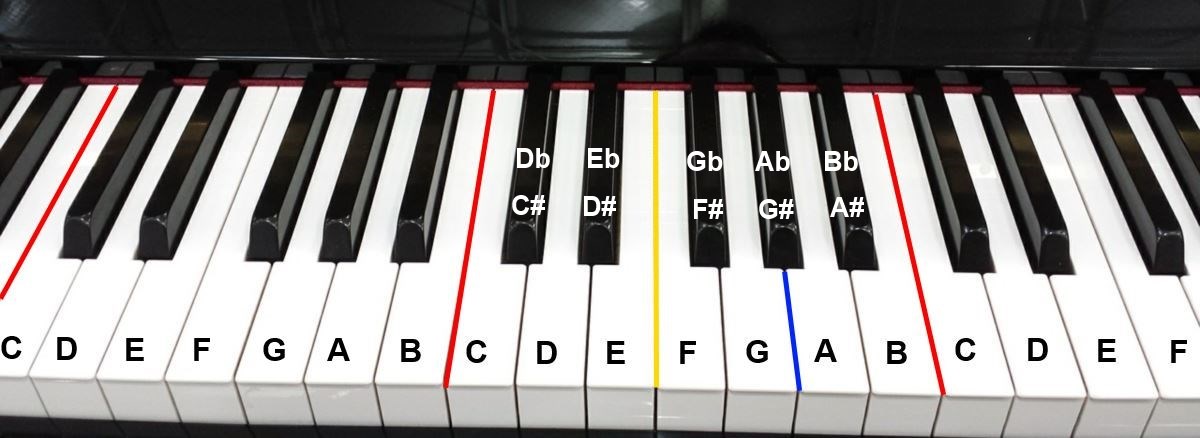How to find notes on the piano keyboard?

If you are not familiar with a piano keyboard, the groups of black keys (see previous step) will help you to find any key on the piano. The place to start is the middle C.
Middle C
Middle C is the reference point on the piano. You can find the position of every key on the keyboard by using the black keys as a reference. The C note is the white key directly to the left of the group of two black keys (see the red line above). As you can see, you have more than one C. The middle C is the one in the center of your piano keyboard.
White notes (also called natural notes)
All the white notes use the first seven letters of the alphabet. Moving up from C you have the notes D, E, F, G and you go back to the beginning of the alphabet with A, B, C and so on. The group of seven white keys from C to B, with the five black keys between, is called an octave and this pattern repeats itself on a piano.
When using the black keys as a reference, you can find the F note directly to the left of the group of three black keys (yellow line). To find the A note, imagine a line in the middle of the group of three black keys (blue line).
Black notes (also called accidental notes)
The black keys on a piano are arranged in groups of two and groups of three. Their names are based on the white keys near them and the Sharp (#) or Flat (b) symbols.
A Sharp means to go up to the next key by a half step (see previous step), a Flat to go down. So the black key immediately above D becomes D sharp or D# and the black key immediately below becomes D flat or Db.
Each black key can have two different names, the sharp and the flat names. It is important to remember them because both the names are used in music. For example, the first black key in the group of two keys is called C# or Db.
Summary
You have learned how to find the notes on your piano keyboard.
At this point, you are ready to explore the chords on the piano.